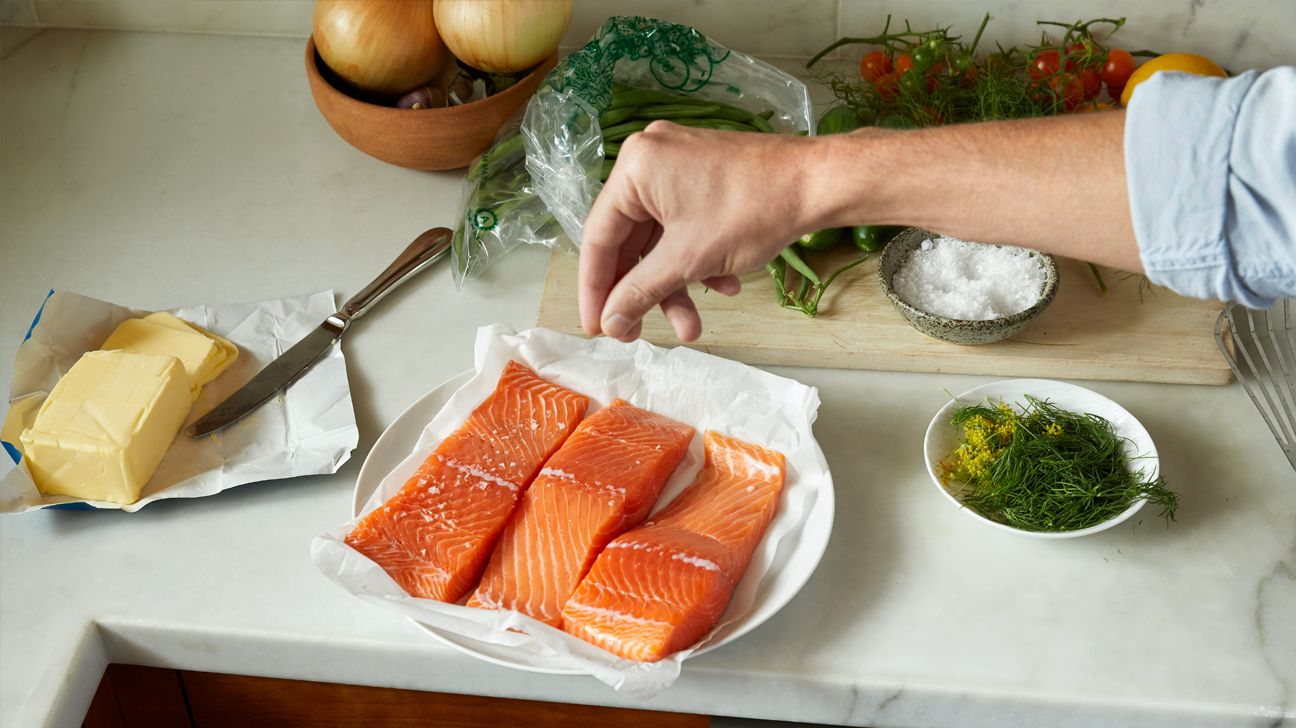
- A new study has found that replacing common salt with salt substitutes may lower your risk of dying from heart disease.
- Salt substitution was found to have an effect similar to blood pressure medications.
- Experts say salt substitution helps to control blood pressure and potentially reduces strain on the heart.
- Salt substitution aside, you can reduce your salt intake by limiting fast food and cooking more of your own meals.
Salt may be a tasty way to add flavor to your food, but too much of it is bad for your heart health.
New research has found that reducing your sodium intake by using salt substitutes may lower your risk of dying from heart disease.
A systematic review of 16 randomized controlled trials (lasting six months or longer) published in the journal Annals of Internal Medicine found that using a salt substitute while cooking was linked with a lower risk of dying early from cardiovascular disease.
Salt substitution was also linked with a reduction in blood pressure and had an effect similar to that of blood pressure medications.
The trials compared the effects of common salt — also known as sodium chloride — and a salt substitute comprised of 25% to 30% potassium chloride and 60% to 75% sodium chloride.
Michelle Routhenstein, a preventive cardiology dietitian at Entirely Nourished, says these findings are what she’d expect them to be.
“We already have clinical research showing that high sodium diets are linked to cardiovascular disease due to their negative impact on blood pressure and blood vessel health, function, and integrity, so the results aren’t surprising,” she explains. “Excessive salt intake contributes to elevated blood pressure, arterial damage, and fluid retention, all of which increase the risk of cardiovascular disease.”
Chelsea Johnson, MS, RD, LD, CBC, a registered dietician with Memorial Hermann, agrees.
She says the link between salt intake and increased blood pressure is one of the biggest risk factors for heart-related events.
“Therefore, decreasing salt in your diet can improve blood pressure to healthier levels, in turn, decreasing your risk of cardiovascular events,” she surmises.
Salt may be a popular seasoning, but it’s not the only way to add flavor to your food. Potassium chloride is one alternative.
“Salt substitution simply means replacing some or all of the table salt in a person’s diet with alternatives that contain less sodium or even include other minerals,” Routhenstein explains.
Some common examples include potassium chloride, magnesium chloride, and certain herbs and spices.
“Put simply, salt substitutes, such as those containing potassium chloride, help lower cardiovascular risk factors by reducing sodium intake while increasing potassium levels. This helps to control blood pressure and potentially reduce strain on the heart muscle,” Routhenstein surmises.
So, if you’re looking for ways to reduce your sodium intake, how should you go about it?
First things first, it may be helpful to know how much sodium is considered healthy.
According to the American Heart Association, the daily recommendation for sodium is 2300mg/day, with an ideal limit of 1500mg/day.
Routhenstein adds that If you have high blood pressure or cardiovascular disease, limiting each serving to less than 350-500mg of sodium is advisable.
“Consider making a gradual transition [to salt substitutes] to assess the amount needed and how it impacts your enjoyment of the food,” she suggests.
It is important to note, however, that salt substitution is not to be used in large quantities either.
“Excessive intake of potassium chloride, typically found in a salt substitute, can lead to hyperkalemia, potentially leading to conditions like heart arrhythmias and cardiogenic shock,” Routhenstein warns.
As is often the case with nutrition, moderation is key.
Salt substitutes aside, what else can you do to reduce your salt intake?
“Salt in the American diet typically comes from processed and packaged foods and restaurant and fast food meals. So, the more foods that can be prepared at home, the better,” Johnson points out.
You should consider removing table salt from your dinner table too, so you’re less likely to use it. Johnson recommends relying on other herbs and spices instead.
Routhenstein agrees. “Instead of solely relying on salt substitutes, consider adding fresh herbs, spices, and citrus juices to your dishes.
“These can add depth and complexity to your meals without relying on salt. Experiment with different combinations to create delicious and satisfying dishes,” she suggests.
If you’re buying cooking sauces, ready-made meals, or other processed food items, it’s a good idea to look out for those with “low sodium,” “reduced sodium,” and “no added salt” labels as well.
However, a word of warning. Johnson says a food item needs to have less than 140mg of sodium per serving to be considered low sodium, so be sure to check the label.
Finally, you can pair higher sodium items with more potassium-rich foods like beets, edamame, regular potatoes, beans, or fish.
Routhenstein says this can help negate the sodium effect.
Too much sodium is bad for your health, but you can lower your risk of heart disease by swapping to salt substitutes containing potassium chloride or using herbs and spices in your cooking instead.
Limiting fast food consumption and being wary of high sodium packaged foods is also a good idea.


